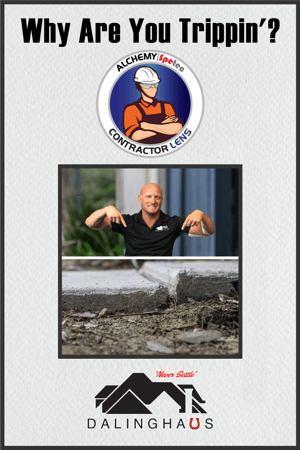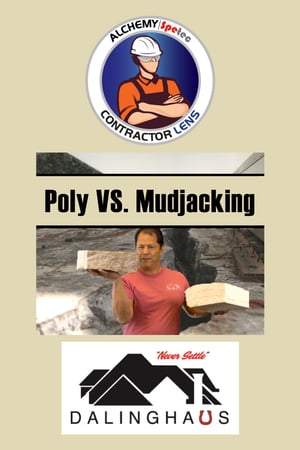
 This post is part of the Alchemy-Spetec Contractor Lens series, featuring views, news & case studies written by our customers. This article, written by Robin Smith of Dalinghaus Construction, reviews common causes of trip hazards and the repair solution of polyurethane concrete leveling. If you're an Alchemy-Spetec customer and you'd like to discuss writing content for our blog, please send an email to marketing@alchemy-spetec today!
This post is part of the Alchemy-Spetec Contractor Lens series, featuring views, news & case studies written by our customers. This article, written by Robin Smith of Dalinghaus Construction, reviews common causes of trip hazards and the repair solution of polyurethane concrete leveling. If you're an Alchemy-Spetec customer and you'd like to discuss writing content for our blog, please send an email to marketing@alchemy-spetec today!
Raise your hand if you have ever tripped walking down the sidewalk!
Well you are trippin’ for 1 of 2 reasons:
- You are uncoordinated, and can’t be trusted to walk and chew gum at the same time (that would be me).
OR - Uneven concrete slabs created a trip hazard that you have just fallen victim to!
What causes concrete to shift, become uneven, and cause these trip hazards?
- Expansive clay soil: Expansive clay soil is prone to swelling and shrinking. Changes such as temperature, drought, and moisture causes it to expand and contract...causing the concrete to move.
- Soil compaction: When preparing to build a home, the soil must be moved around, or graded, to create a level base to build upon. If the soils aren’t properly compacted before the concrete is poured, over time, it eventually compresses and can settle. This settlement can cause the concrete to shift.
- Leaking water: If a plumbing or irrigation line springs a leak, it can erode the soil around the concrete, causing it to be unstable.
- Poor drainage: Similar to a leak, improper drainage can also cause erosion.
Concrete removal and replacement can be costly. There is a cost effective solution that can even out those dangerous trip hazards in just 1 day!
Polyurethane concrete leveling to the rescue! Polyurethane concrete leveling, also known as “polyjacking”, is a process in which the contractor drills small holes through the affected sunken slabs. A port is then placed in the hole, the polyurethane is injected as a liquid, then quickly expands to lift the slab back into place.
If you are a visual person like me, check out this video on the Dalinghaus Consruction YouTube channel...
Whether it is a sidewalk, porch, patio, or a VERY busy Orange County Transportation Authority bus stop (insert one more rad video)...
...polyurethane concrete leveling is often an excellent solution, without breaking the bank!
Click here for more information on Dalinghaus Construction.




